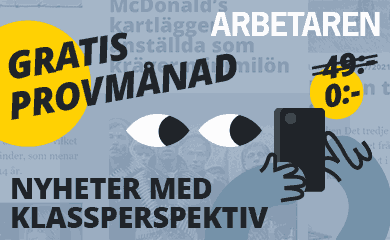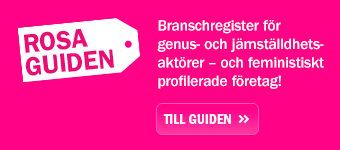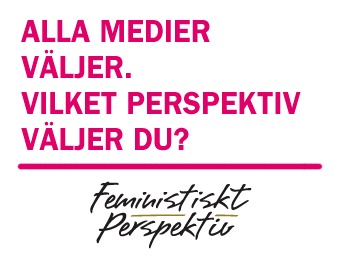The EU Commission has disputed gender stereotypes in the media since 1995. Not so anymore, or how to explain ”Science: It’s a Girl Thing”?
The film has been elaborated according to a standard format in film advertising: High heels, short skirts, flirting girls, a male view, make up and so on i.e. all the typical characteristics of the common female stereotype the Beauty slave.
Due to ample criticism the film has now been withdrawn, with an excuse, by Michael Jennings, the EU Commissions spokesperson for sciences. Last week I had an interesting conversation with him over the mail. I told him that I was surprised by the incompetence of the Commission concerning gender stereotypes. Especially since the subject has been on the EU agenda for 17 years.
Until 2010 Gender Equality in the Media was a key area of the Commission´s Gender Equality strategies and action plans. But it is not mentioned in the strategy for the period 2010-15. When I asked why Mr Jennings answered that the Commission considers it difficult to achieve any results in this field. The specific goal of eradicating gender stereotypes in the media has therefore been transformed to a statement that simply declares that the Commission is against gender stereotypes in the media.
The purpose of the EU campaign is good. The aim is to attract young women to science education and work in sciences. This is important to change traditional gender segregated patterns in the education systems and on the labour market. But the message is ambiguous when sexism is used to challenge gender norms.
The campaign has a web site which is designed with a female code in pink and with a head line that looks as if it has been drawn with a lipstick as pencil. The letter I in It’s looks just like a lipstick. The message is very similar to any girl’s magazine.
Michael Jennings says that the response on the web site has been positive. Sure, gender stereotypes sell, or why are pin up girls still used for selling tires? They catch the eye. On the site you can also read that the focus group that was used when processing the campaign liked lipsticks. To write with a lipstick was considered original, fun and ”eye-catching”. I asked Mr Jennings if a similar campaign aiming at attracting young men to women dominated occupations, for instance nursing, would use the colour military green? May be with small gun tucked in somewhere?
When addressing young men not interested in sciences sport attributes are used such as cars and other objects developed by scientists. ”You have to use the language of your target group”, he said.
I said, well, then the EU Commission speaks with a forked tongue. You cannot presuppose that all young women like make up and that all young men like cars. And you still have a long way to go to challenge the gender stereotypes. About as far as Lego has to do in its toy campaigns.

























MEST KOMMENTERAT
SENASTE KOMMENTARERNA
Om Var Grupp 8 en feministisk organisation?
Om #bildskolan 21: Att äta Den Andre
Om #bildskolan 21: Att äta Den Andre
Om Porr handlar om betalda övergrepp
Om Nobels fredspris till kampanj för att avskaffa kärnvapen
Om Feministiskt perspektiv öppnar arkivet och startar på nytt!
Om Rödgrönt ointresse för fred och nedrustning borde oroa många
Om Var inte målet att vi skulle jobba mindre?
Om Feministiskt perspektiv öppnar arkivet och startar på nytt!
Om Feministiskt perspektiv öppnar arkivet och startar på nytt!
MEST LÄST